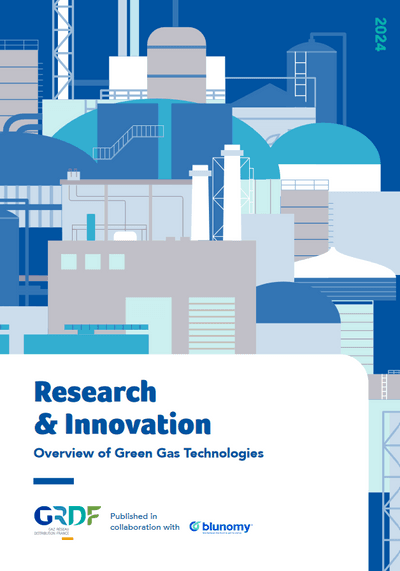A comprehensive overview of green gas technologies - challenges and levers to accelerate green gas deployment

The Overview of Green Gas Technologies report, a joint initiative by Blunomy and French gas distribution operator GRDF, is the result of dozens of interviews with green gas experts and several months following market developments. It provides a comprehensive technological overview of green gas production chains, highlighting the challenges to be overcome to accelerate their deployment, as well as innovative solutions to address them.
The production of renewable and low-carbon gas makes use of locally available inputs to decarbonise existing gas uses, including in heavy mobility and industry. Green gases play an essential role in ensuring a sustainable transition to carbon neutrality while supporting energy independence. Their critical role was reaffirmed during the consultation for the new French energy planning policy, which targets 50TWh production by 2030, including 44TWh for injection into the gas network. Thus, it is crucial to continuously monitor technological innovations in green gas production, processes and infrastructure.
The report focuses on eight production pathways – some are already mature or in the process of being industrialised (anaerobic digestion, power-to-methane, gasification), while other emerging technologies, which utilise new types of feedstocks to further increase production capacity, are at the demonstration stage (hydrothermal gasification).
The Overview of Green Gas Technologies sheds light on how these technologies operate as well as the constraints and enablers for their deployment:
- Mapping green gas production pathways (particularly for biomethane)
- Assessing different pathways’ maturity levels and identifying remaining challenges, as well as key levers and those offering innovative solutions to address them
- Analysing the next steps to reach industrialisation
- Assessing the role of each pathway in increasing production capacities through the valorisation of feedstocks